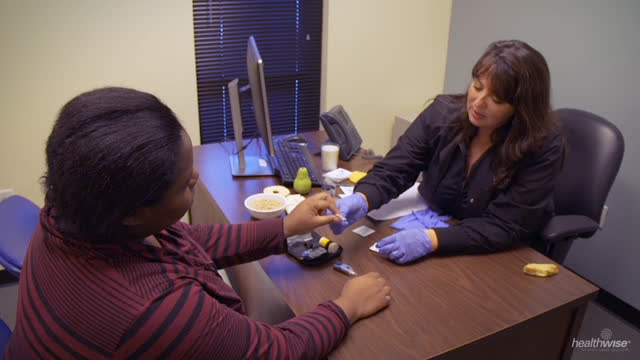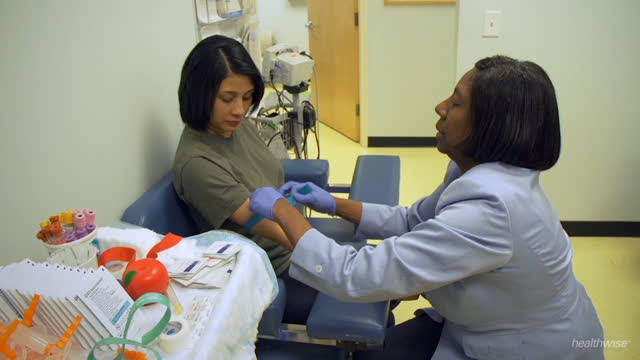Gestational Diabetes: Counting Carbs
Overview
Carbohydrate counting helps you to control your blood sugar when you have gestational diabetes.
- Carbohydrate counting helps you determine the amount of sugar and starch (carbohydrate) in the foods you eat. This is important, because carbohydrate affects your blood sugar more than fats or proteins do.
- Carbohydrate counting involves learning how to spread out the amount of carbohydrate you eat throughout the day to help prevent high blood sugar after eating.
- You should test your blood sugar after meals to see what effect different carbohydrate foods have on your blood sugar level.
How to count carbohydrate
Here are some ways to help you count carbohydrate.
Balance carbohydrate
The following suggestions can help you count carbohydrate and balance your meals and snacks:
- Talk with a registered dietitian to help plan the amount of carbohydrate to include in each meal and snack.
- Get a book that lists the carbohydrate content in different foods.
- Count either grams or servings of carbohydrate. If you are having high blood sugar levels after eating—for example, after breakfast—you may want to decrease the amount of carbohydrate you eat at that time.
- Eat standard portions of carbohydrate foods. Each serving size or standard portion contains about 15 grams of carbohydrate. It might be helpful to measure your food portions when you are first learning what makes up a standard portion.
- Talk with a registered dietitian about how much protein and fat you need.
Other suggestions
- Read food labels for the carbohydrate content, and check the serving size on the package.
- Check your blood sugar level before and 1 hour after eating the first bite of each meal to see how the food affects it.
- Record what you eat and your blood sugar results in a food record. At each regular visit with your diabetes specialist, or whenever you think your meal plan needs adjusting, you can review the food record.
- If you take mealtime insulin, you might be taught to adjust the amount of insulin you need to cover the amount of carbohydrate you eat.
- Get more help. The American Diabetes Association offers booklets to help people learn how to count carbohydrate, measure and weigh food, and read food labels.
Credits
Current as of: July 10, 2023
Author: Healthwise Staff
Clinical Review Board
All Healthwise education is reviewed by a team that includes physicians, nurses, advanced practitioners, registered dieticians, and other healthcare professionals.
Current as of: July 10, 2023
Author: Healthwise Staff
Clinical Review Board
All Healthwise education is reviewed by a team that includes physicians, nurses, advanced practitioners, registered dieticians, and other healthcare professionals.






